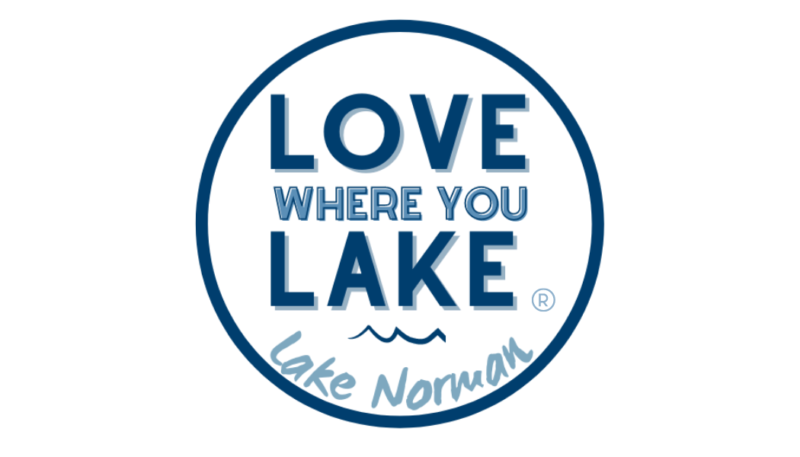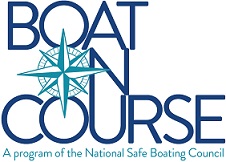
Want to have more fun and fully experience Lake Norman?
Loving where you lake means being safe, responsible, and ensuring your family, friends, and fellow lake enthusiasts also have a great experience at the lake!
Key Laws & Rules To Know
What do I need to do to operate a boat?
A Boater Safety and Education Course is required for all boat operators born after Jan 1st, 1988.
Do I need to wear a life-jacket?
Anyone under age 13, or riding a personal watercraft (PWC), or being towed must wear a life jacket. Wearing a life jacket as a simple safety precaution is a good idea, especially those who are inexperienced or unfamiliar with the lake.
Does Lake Norman have no-wake zones?
Lake Norman has a no-wake zone within 150 feet of any dock, bridge, marina, boat ramp, and within 100 feet of a law enforcement vessel that is displaying a flashing blue light. No wake speed is idle speed or a speed creating no appreciable wake.
Can I have alcohol on my boat or vessel?
North Carolina Prohibits operating a boat or vessel while impaired. Boating under the influence laws are strictly enforced and are the same as driving a motor vehicle. Beer and unfortified wine are allowed on any vessel, but mixed beverages, spirituous liquor, and fortified wine are only allowed on a vessel which can be considered a secondary residence.
How can I safely swim in the lake?
- Consider wearing a floatation device or using a swim buoy for open water swimming.
- Depths of Lake Norman vary; diving where you cannot see the bottom is discouraged.
Can I raft together with other boats?
Rafting of three (3) to ten (10) vessels shall be conducted at least 100 yards from the shoreline. Rafting of eleven (11) or more vessels shall be conducted at least 300 yards from the shoreline. (b) One (1) or two (2) vessels may be tied or anchored within 100 yards of the shoreline, but they must be at least fifty (50) yards from any other vessel or group of vessels tied or anchored together.
What should I know if I am driving a Personal Watercraft or Jetski?
- To operate a PWC, you must be 14 years of age and complete boating certification.
- PWCs can only operate during daylight hours.
- The operator and all passengers on a PWC must wear a personal flotation device.
- PWC rider max capacity includes any persons being towed by the PWC.
How can I optimize my wake for wake surfing?
- Find big, open bodies of water and stay at least 200 feet away from marinas, launch areas and docks.
- Minimize repetitive passes.
What else should I consider?
-
- Any day at the lake is a GREAT day, especially when everyone uses common courtesy and respect.
- Sound travels long distances across water, so keep music at a responsible level and at reasonable hours.
- To keep the lake clean, don’t litter, and remove any trash or debris you might find that does not belong in the lake.
- Everyone plays a role in keeping the lake safe and beautiful for residents, for visitors, and for our natural habitat. Please do your part so that we can all continue to Love Where You Lake!
Safe Boat Driving – Rules of the Lake
Meeting: When two vessels approach each other from opposite directions “head on“, each must alter course to the right to avoid collision. If the two vessels are far enough to the left of each other so that no change in direction is needed for safe passage, both will maintain their course and speed to pass clear.
Crossing: When two vessels approach each other at an angle, the one on the right has the right-of-way and the other must stay clear.
Restricted Maneuverability: Sailboats not under power and vessels propelled by oars or paddles have the right-of-way over motorboats except in an overtaking situation where the vessel being overtaken always has the right-of-way.
Passing: When one vessel overtakes another going in the same direction, the craft being overtaken must maintain course and speed, and the passing vessel must keep a sufficient distance to avoid collision or endangering the other craft from its wake.
Speed and Control: All vessels must be operated at reasonable speeds for given situations and must be always under the complete control of the operator.
Danger Areas: Vessels passing close to swimming areas, moored vessels, or vessels engaged in fishing, servicing buoys, or similar activities, must reduce their speed so as to prevent injury to swimmers or other occupants of the area.
Additional Key Safety Information
Safe Boat Driving – Lake Norman Boating Navigational Aids (ATON)
Numbered and lighted channel markers for both the main lake and major creeks begin at Cowens Ford Dam and continue northward to Buffalo Shoals Bridge. Keep the RED triangular marker on the boat’s starboard (right) side and GREEN rectangular markers on the port (left) when proceeding up lake or when entering a channel from the main body of water. Creek channel marker numbers will get higher as you travel away from the main channel. DO NOT pass between the marker and the shore. There are also lighted and unlighted danger markers indicating a shoal or rocks. DO NOT go near these markers.
- Lake levels are controlled by Duke Energy and can vary as much as 8 feet in normal operation. They are generally drawn down during the fall and winter months.
- Debris may be floating in the lake Use extreme caution when navigating the lake following an increase in lake levels due to storms, high rains or run-off.
- Bridge clearances Lake Norman is spanned by five major bridges & sixteen additional bridges. The approximate vertical bridge clearances when the lake is at full pond may be found here: http://lnmc.org/lkn/?s=bridge+heigh

